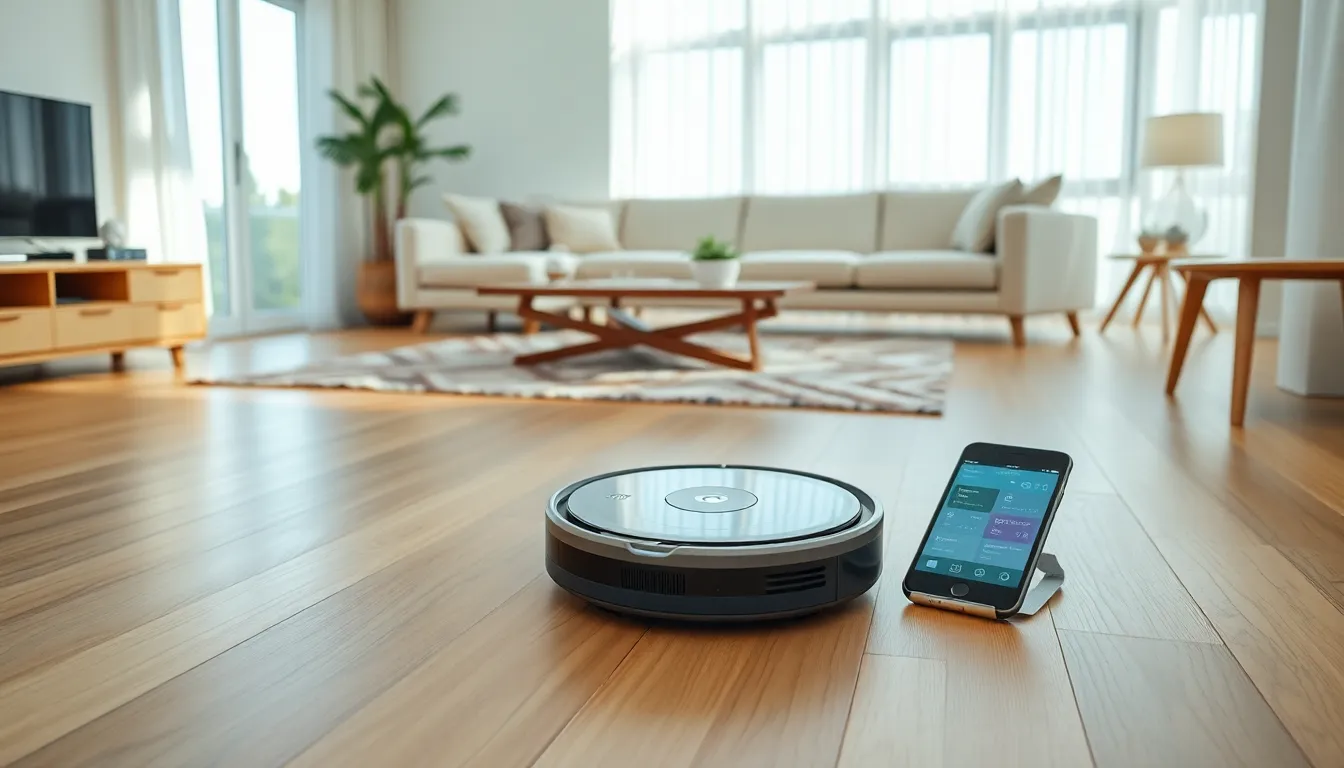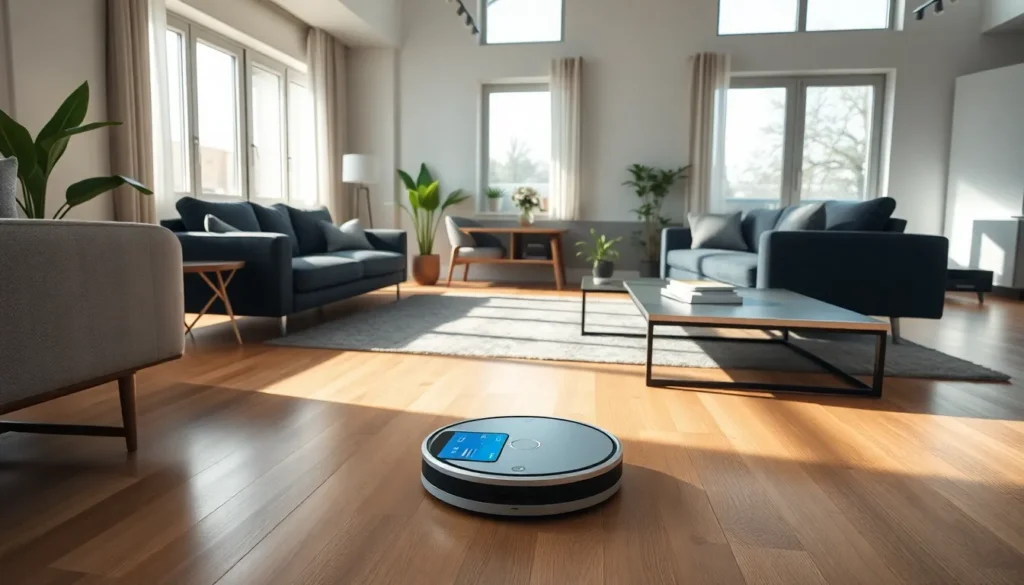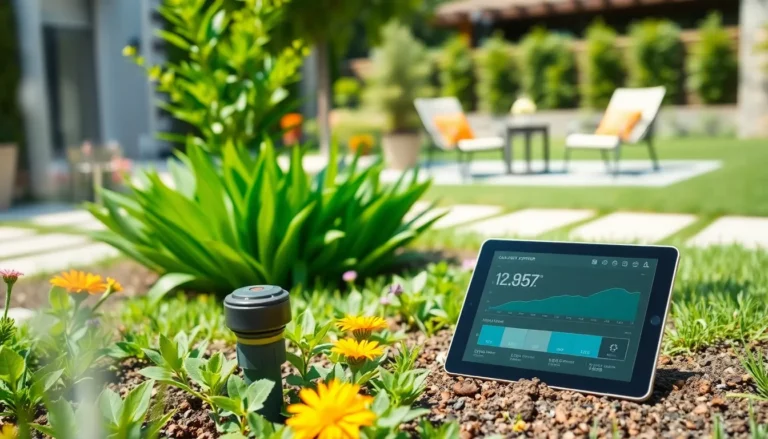Table of Contents
TogglePicture this: you sip your morning coffee while your vacuum zooms around the living room, dodging furniture like a pro. Sounds like sci-fi? Nope, just the wonders of smart home cleaning devices. These tech-savvy gadgets have transformed household cleaning into a walk in the park, or perhaps a stroll on the couch. In this text, we’ll jump into the exhilarating world of smart home cleaning, exploring how they work, the impressive types available, and why they deserve a spot in your home. Buckle up because cleaning has never been this exciting.
Understanding Smart Home Cleaning Technology

Smart home cleaning technology might sound like a buzzword, but it boils down to devices that leverage the Internet of Things (IoT). Ever wonder how these gadgets know when and where to clean? Most rely on sensors, cameras, and even artificial intelligence to map out your living space. They create virtual blueprints, ensuring no corner goes unvacuumed. Take robotic vacuums like the Roomba, for example: they use advanced mapping technologies to navigate, avoiding obstacles while efficiently tackling every speck of dust. It’s like having a little cleaning minion at your beck and call, minus the tiny apron.
Besides, smart cleaning devices often connect to your smartphone through dedicated apps. This means you can schedule cleanings, monitor performance, and even receive reminders, all with a few taps on your screen. So, whether you’re at work or binge-watching your favorite series, you’re just a click away from a clean home.
Types of Smart Home Cleaning Devices
Navigating the range of smart home cleaning devices can be as perplexing as finding a sock’s mate after laundry day. Luckily, here’s a handy breakdown of some popular types:
- Robotic Vacuums: The MVPs of automated cleaning. They can handle everything from hardwood floors to carpets and often come with features like mapping, scheduling, and voice control.
- Smart Mops: Think of them as the sophisticated cousin of robotic vacuums. They mop floors, often with built-in water reservoirs and dirty water extraction systems. Models like the Braava jet make mopping a breeze.
- Window Cleaning Robots: These nifty devices tackle grimy glass with ease. Equipped with suction and cleaning pads, they glide across your windows, ensuring they sparkle without you needing to climb a ladder.
- Smart Air Purifiers: While not strictly cleaning devices, they play a major role in maintaining a clean and healthy home environment. They trap dust, allergens, and even pet dander, making the air fresher for all inhabitants.
- Self-Cleaning Litter Boxes: For pet owners, these devices make feline feces management a thing of the past. They automatically scoop waste into a bin, leaving you with less mess, and less odor.
Benefits of Using Smart Cleaning Devices
Embracing smart home cleaning devices isn’t just about convenience: it offers an array of benefits that can seriously enhance your daily life. Here are some key advantages:
- Time-Saving: The most obvious perk. Smart cleaning devices work diligently while you enjoy other activities, whether it’s grabbing lunch or catching up with friends.
- Consistent Cleanliness: They ensure a consistent cleaning schedule tailored to your home’s needs. It’s like having your cleaning professional, but without the weekly bill.
- Efficiency: These devices are often designed to do a specific job well. For instance, robotic vacuums can operate in tight spaces without missing spots, goodbye crumbs.
- Integration with Smart Home Systems: Many devices can integrate seamlessly with existing smart home setups. Imagine talking to your virtual assistant and having it instruct your devices to clean, a futuristic dream come true.
- Healthier Home Environment: They help reduce allergens, dust, and other irritants, making it easier for everyone to breathe easy and enjoy a healthier living space.
Top Smart Home Cleaning Devices on the Market
Searching for the cream of the crop among smart home cleaning devices? Look no further than this curated list featuring some of the most popular options available today:
- iRobot Roomba i7+: Highly regarded for its smart mapping and self-emptying capabilities. It’s a vacuum that genuinely thinks for itself.
- Braava Jet 240: Ideal for those who want the mopping experience without the hassle. It leaves floors sparkling clean, handling a variety of surfaces with ease.
- Ecovacs Deebot Ozmo T8: A multifunctional robot that vacuums and mops while being aware of its surroundings. Its advanced sensors ensure it doesn’t crash into your delicate décor.
- GHOSTECH Wiper: A window-cleaning robot that makes the dreaded chore of window washing a thing of the past. You can finally ditch the squeegee.
- Smart Air Purifier by Dyson: Boasting high-performance filtration and smart monitoring, it can help you breathe cleaner air while fitting into any modern home design.
How to Choose the Right Smart Cleaning Device for Your Home
Choosing the right smart cleaning device can feel overwhelming, but it doesn’t need to be. Follow these straightforward tips to make the best choice for your cleaning needs:
- Assess Your Space: Evaluate your home’s layout and surfaces. Do you have hardwood, carpet, or both? This will ensure you choose a device that can handle your flooring.
- Understand Your Cleaning Habits: Consider your cleaning frequency. If you’re a neat freak, a device with scheduling capabilities might suit you. If you only clean occasionally, a simple model might suffice.
- Check Battery Life and Charging Features: For robotic vacuums, battery life is a key consideration. Models that’ve self-charging capabilities can be more convenient.
- Look for Integration Opportunities: If you have existing smart home systems, choose a device that can integrate seamlessly with them. This could enhance usability through voice commands and app controls.
- Read Reviews and Compare Models: Always take time to read user reviews, or watch YouTube demonstrations. What works well for one person may not suit another.
Maintaining Your Smart Home Cleaning Devices
Even the most advanced cleaning devices need a little TLC. Here are essential maintenance tips to keep your smart cleaning devices functioning at peak performance:
- Regularly Clean Filters and Brushes: Like a good haircut, keeping your devices clean helps them perform better. Ensure you clear out hair or debris from filters and brushes periodically.
- Update Software and Apps: Manufacturers frequently release updates that can improve both performance and security. Staying updated can prevent tech hiccups.
- Check Battery Health: If you notice a decrease in efficiency, your device’s battery might need replacement. Pay attention to how quickly it holds a charge.
- Store Properly: When not in use, find a designated space that’s out of the way but easy to access for when you need it next. Avoid damp or overly hot areas.
- Reference the User Manual: It might sound boring, but the user manual can provide specific maintenance guidance tailored to your device.
The Future of Smart Home Cleaning Technology
The future of smart home cleaning devices looks brighter than ever. As technology advances, expect to see:
- Improved AI and Robotics: Enhanced AI will make devices even more autonomous, capable of determining which areas need attention and customizing cleaning instructions without manual input.
- More Eco-Friendly Solutions: Future devices will likely include features designed to save energy and reduce waste, appealing to eco-conscious users.
- Integration with Other Smart Home Technologies: The cleaning devices of tomorrow could seamlessly communicate with household appliances, further enhancing home automation.
- Increased User Customization: Expect more devices that allow you to personalize cleaning schedules and parameters based on your lifestyle through more intuitive app interfaces.
- Enhanced Health Monitoring Capabilities: Cleaning devices might soon use sensors that detect air quality, allergens, and other pollutants, providing valuable insights into your home environment.







